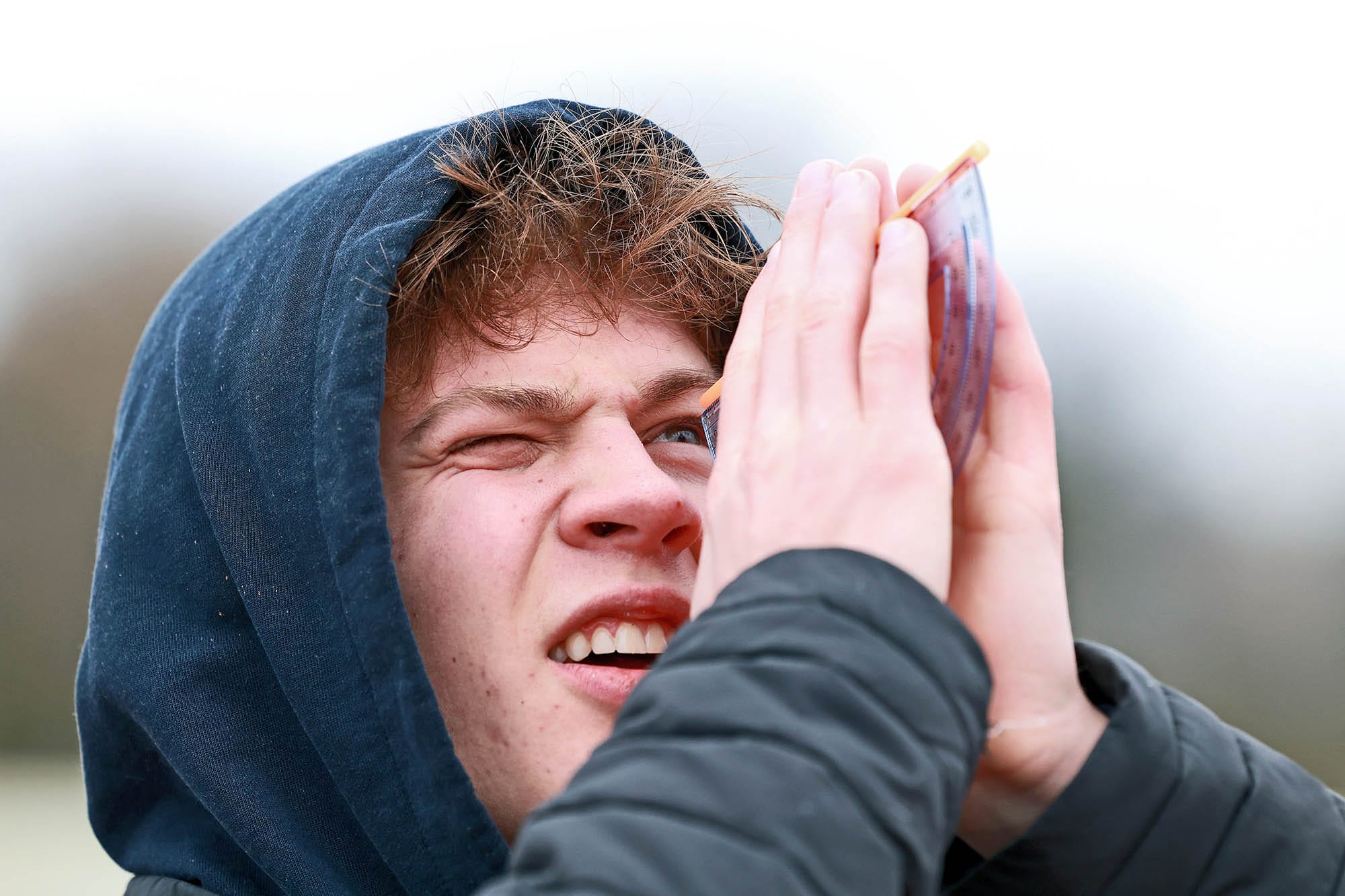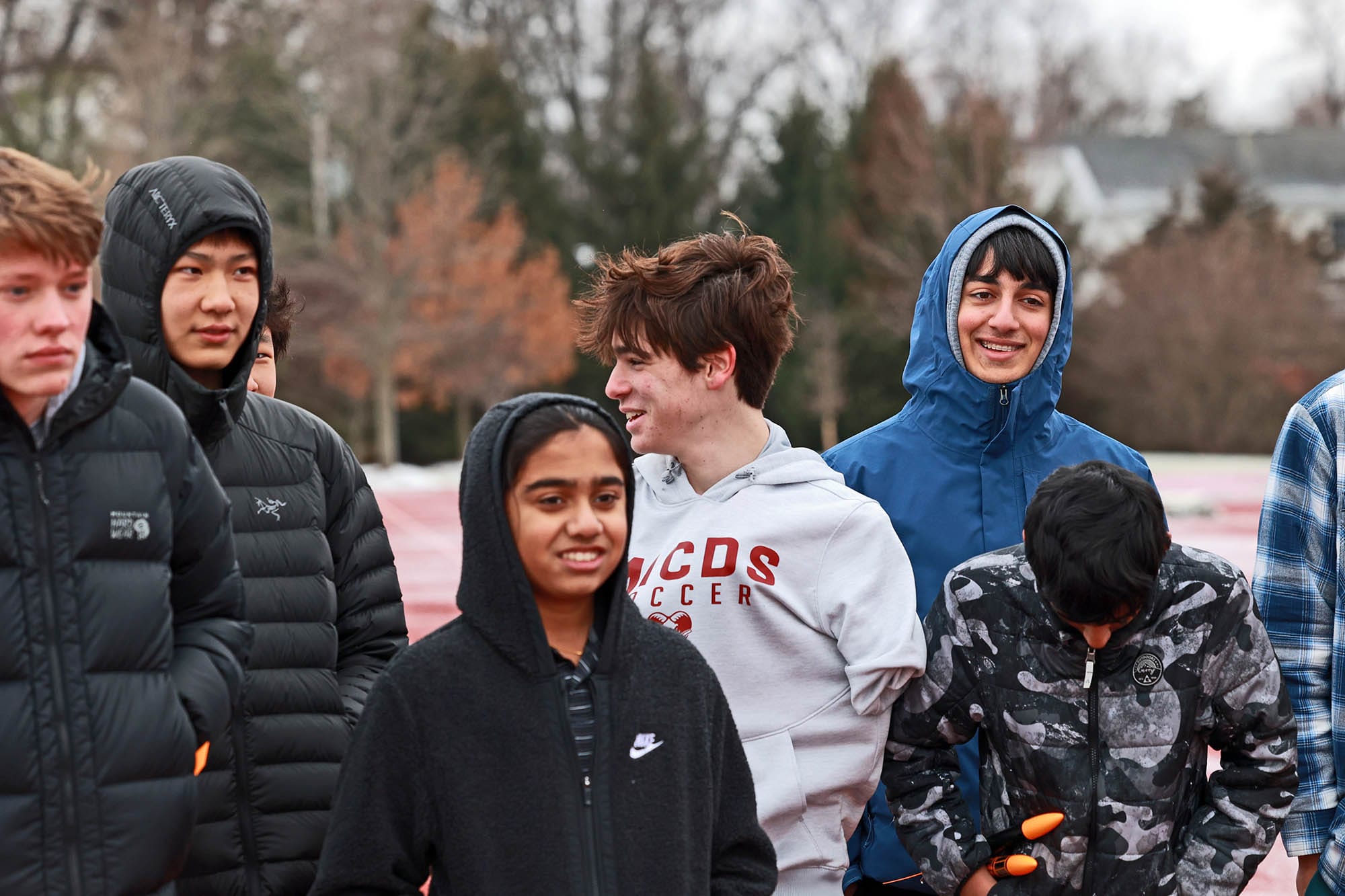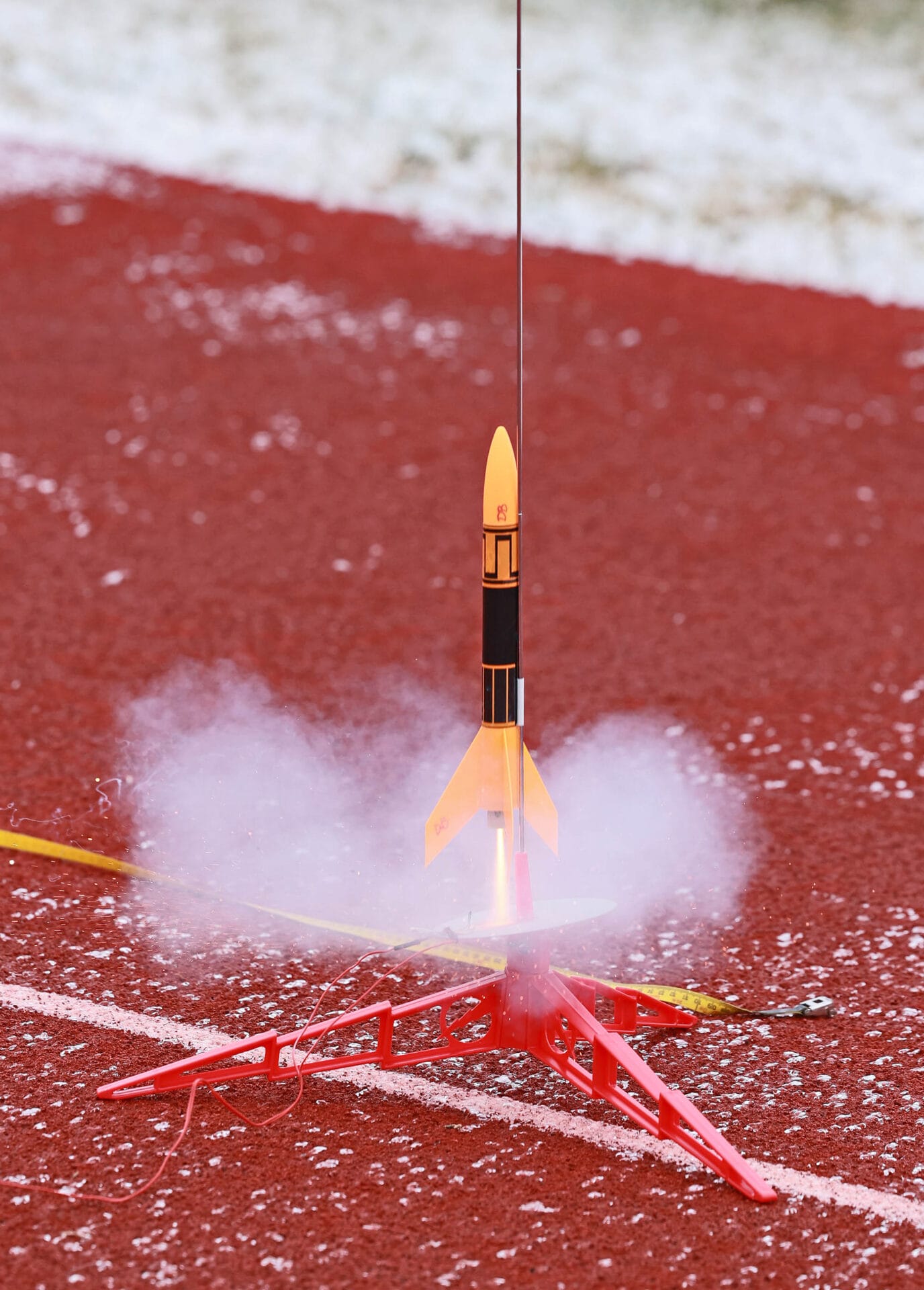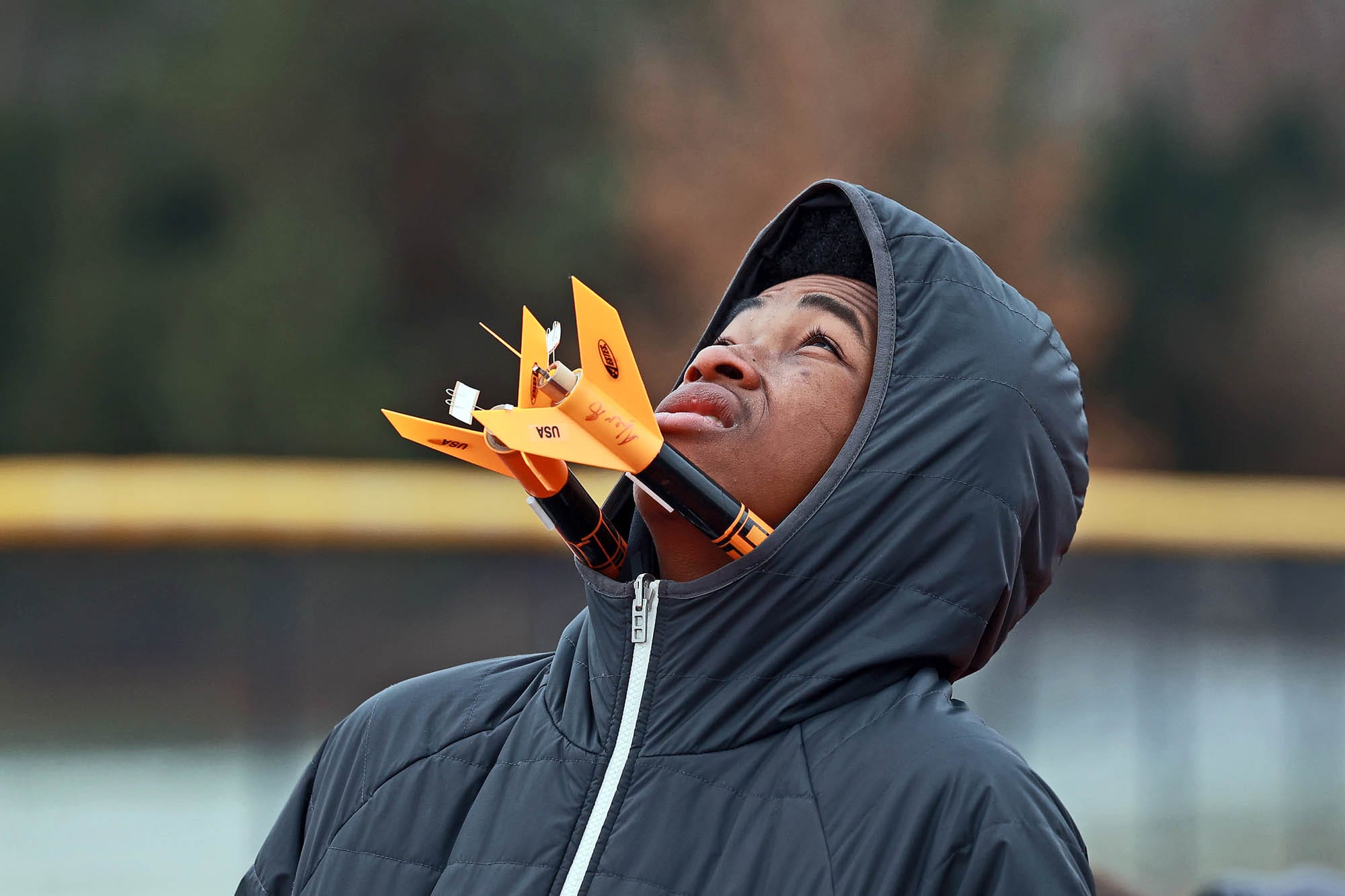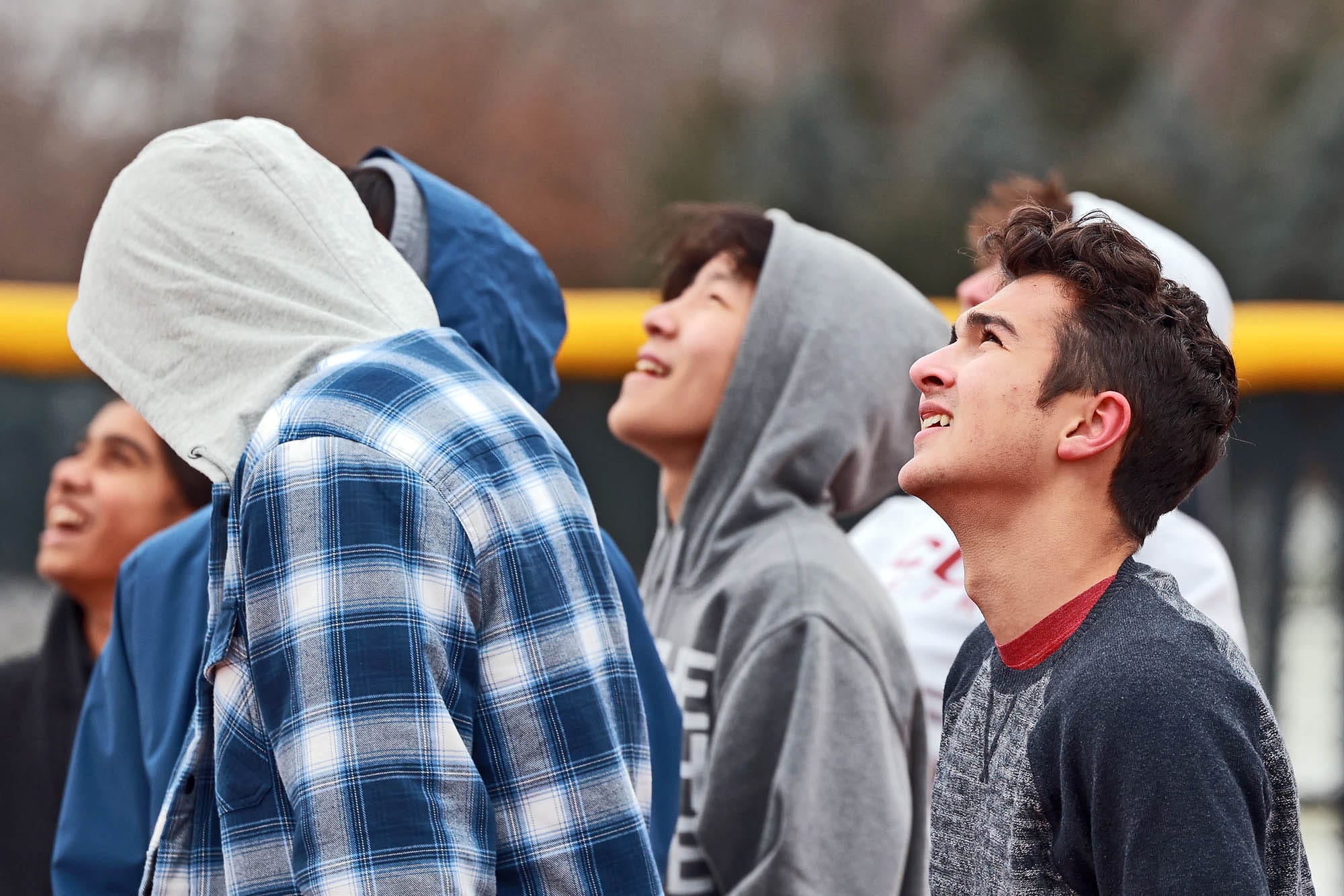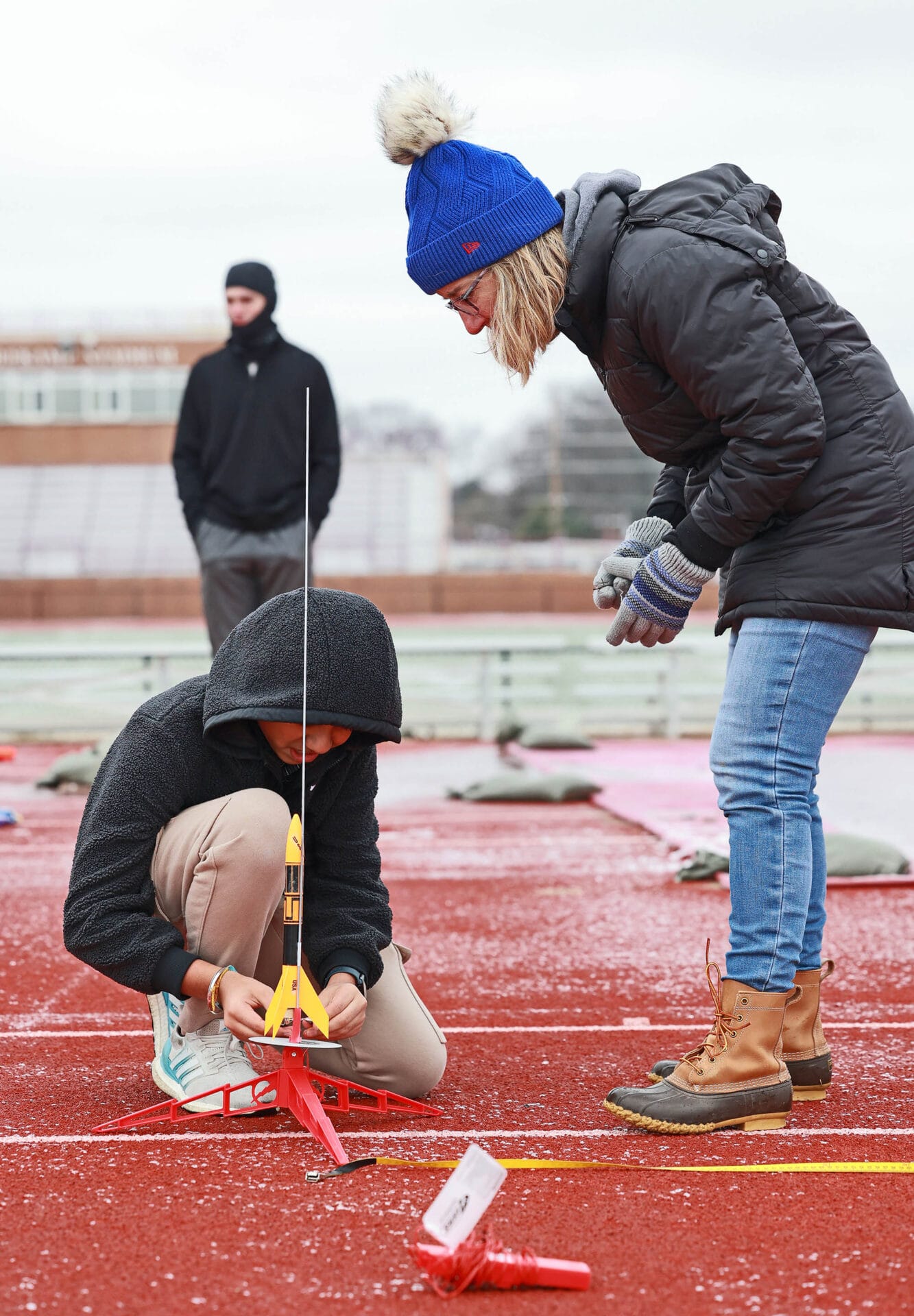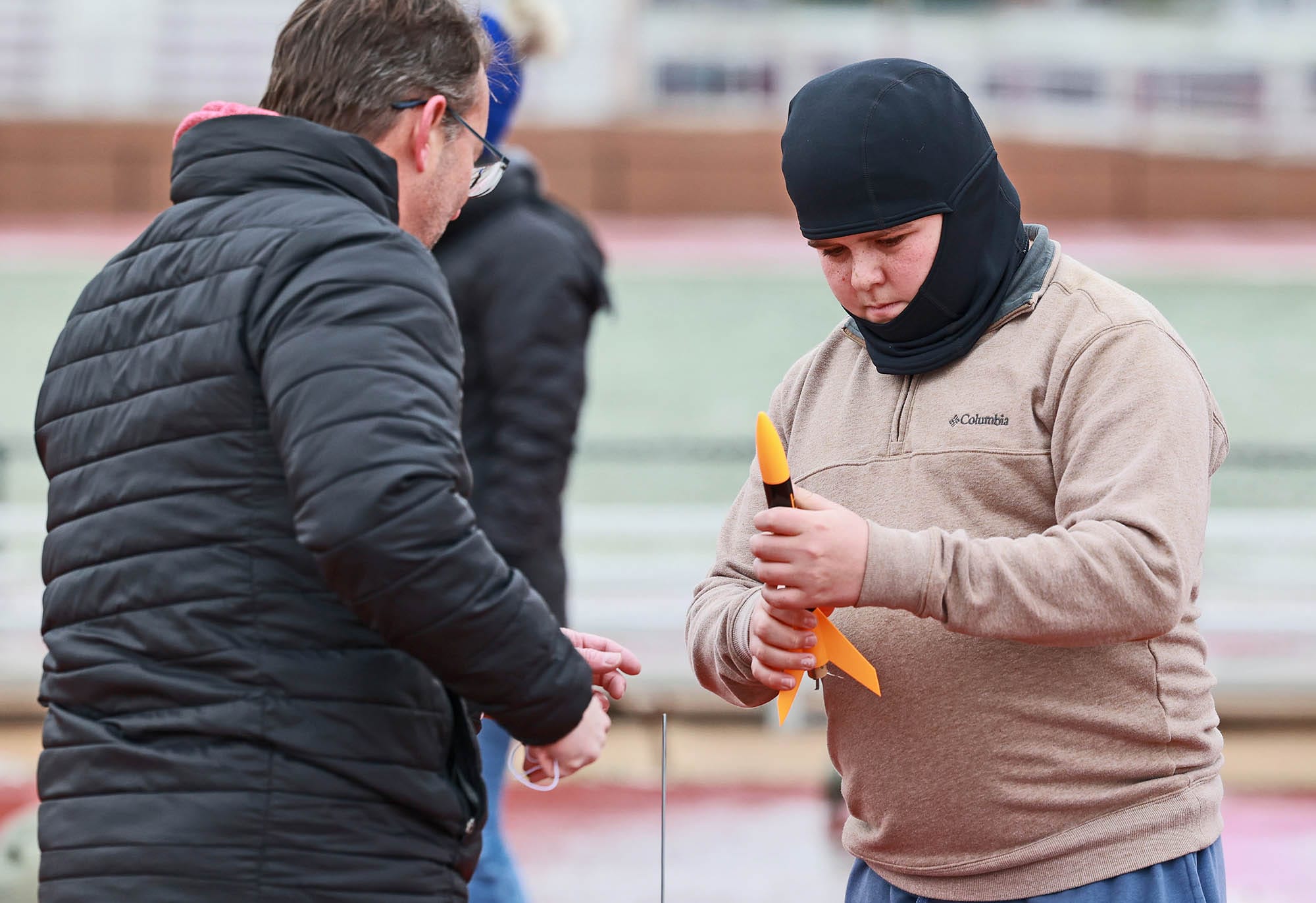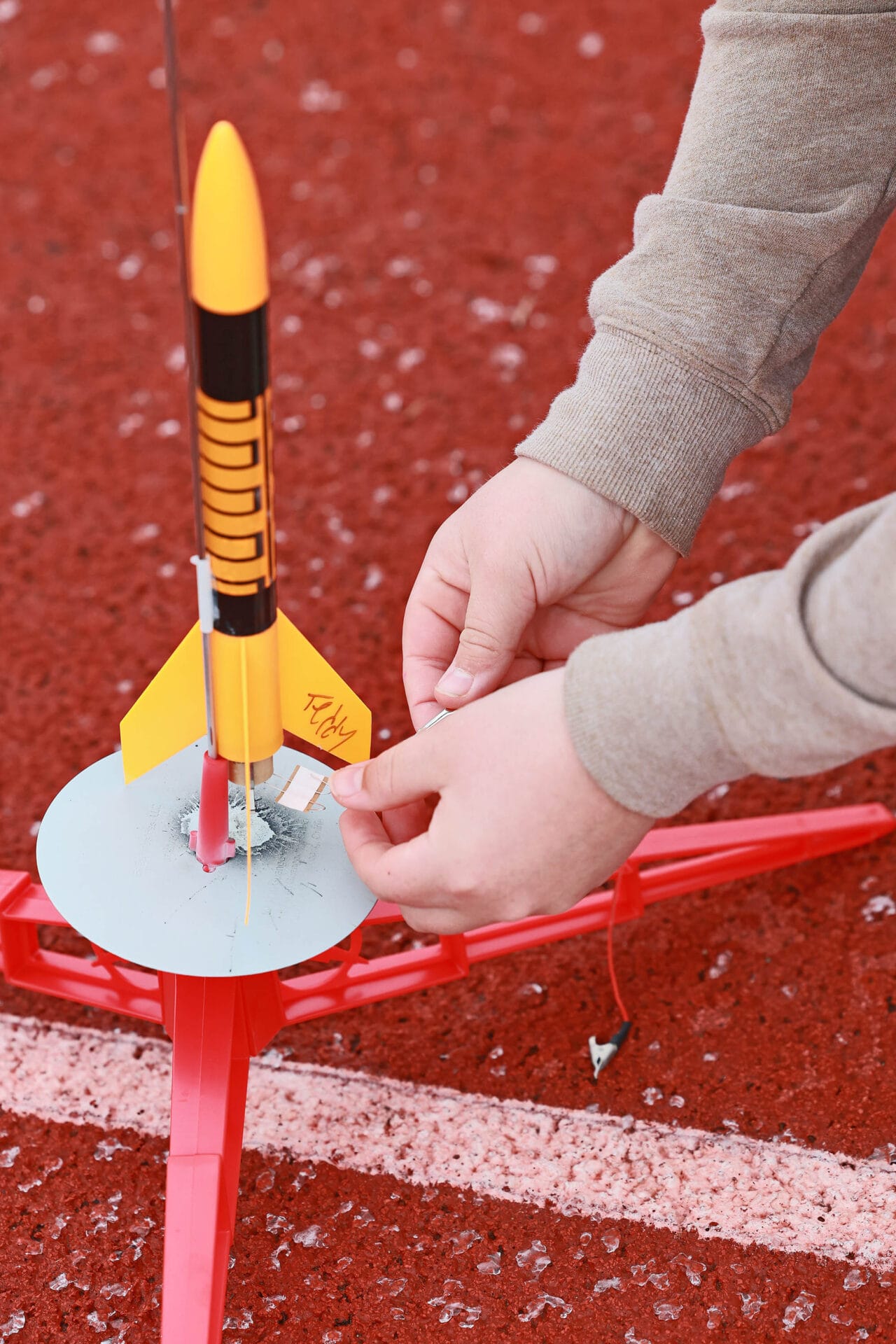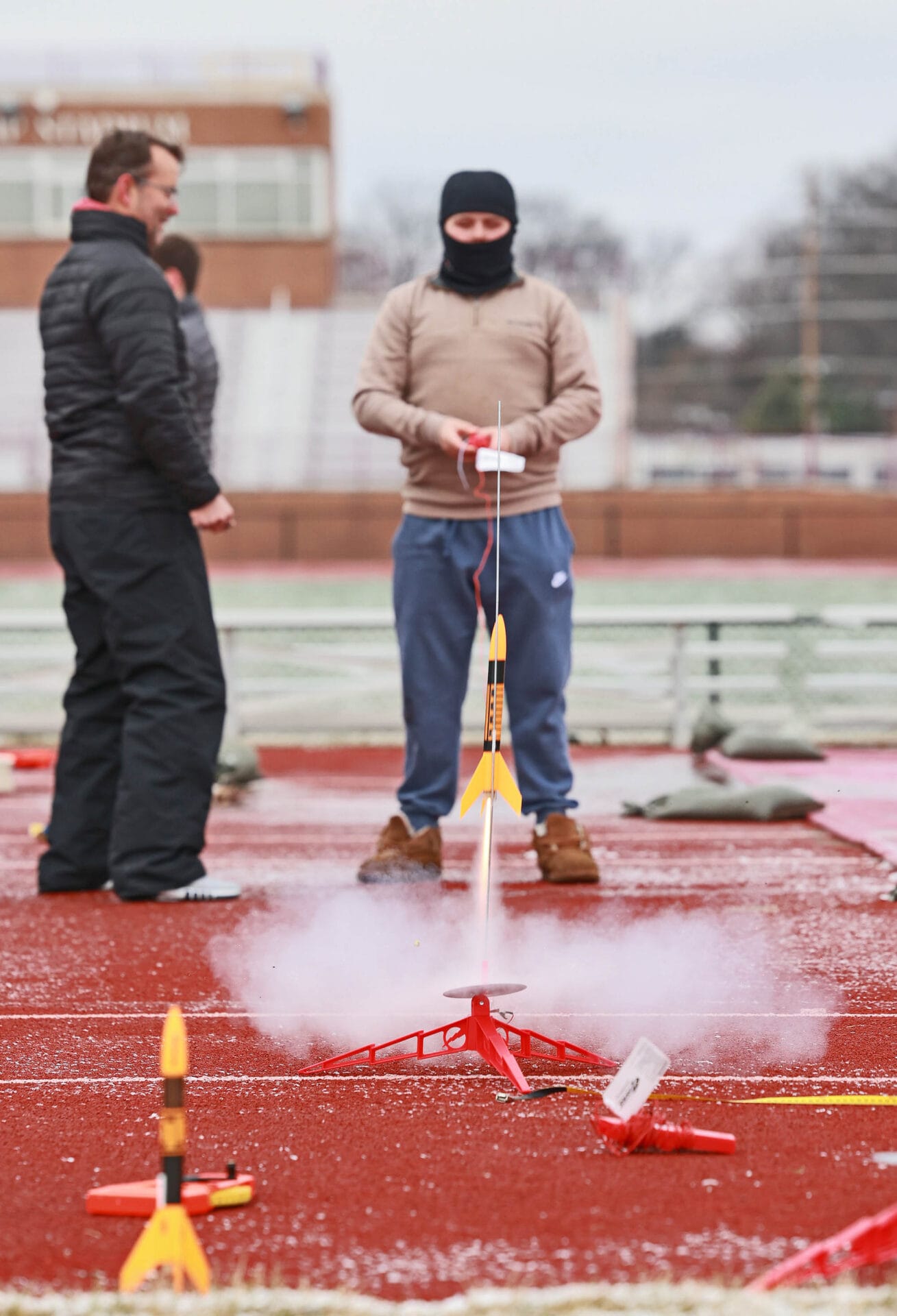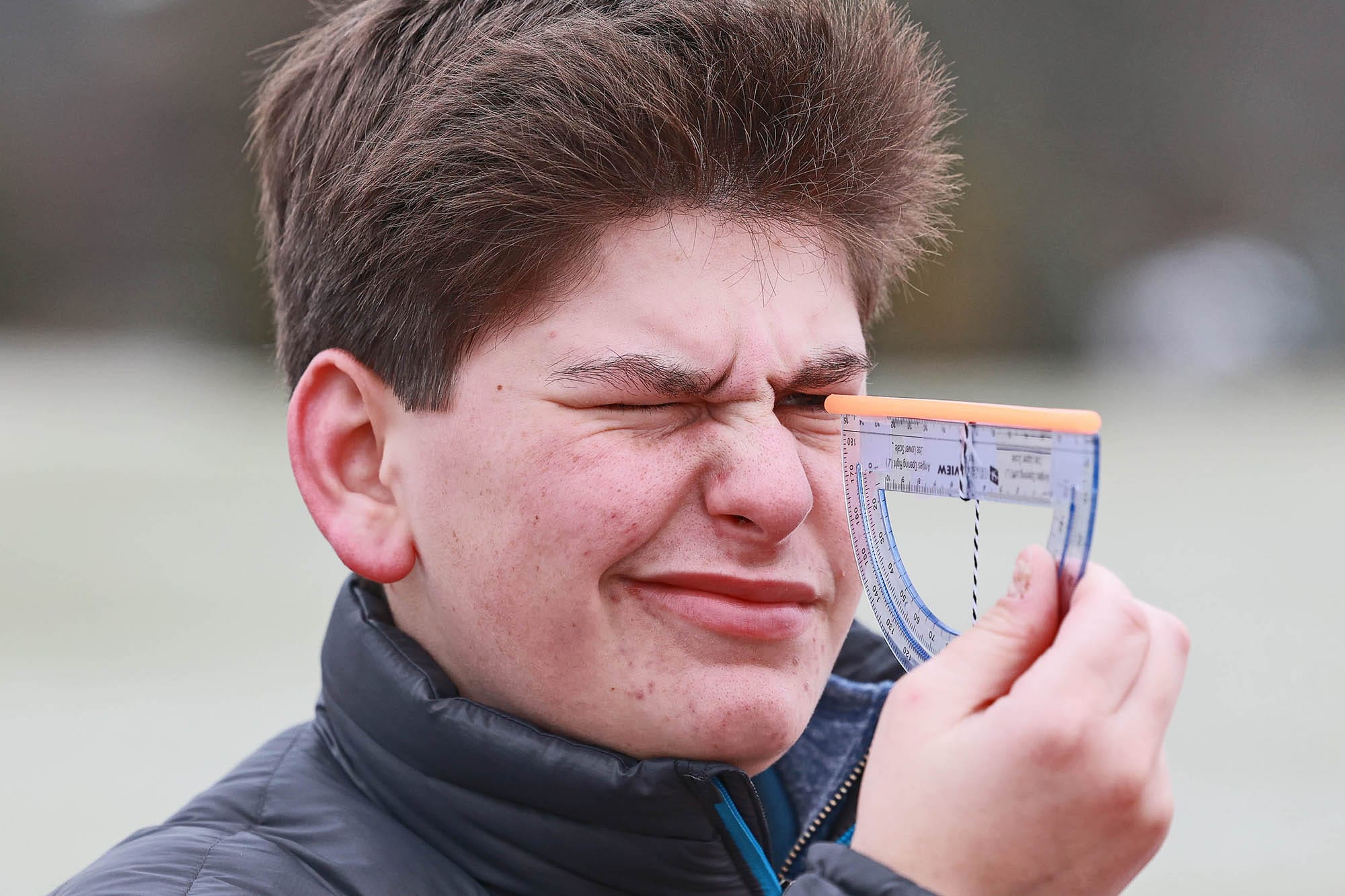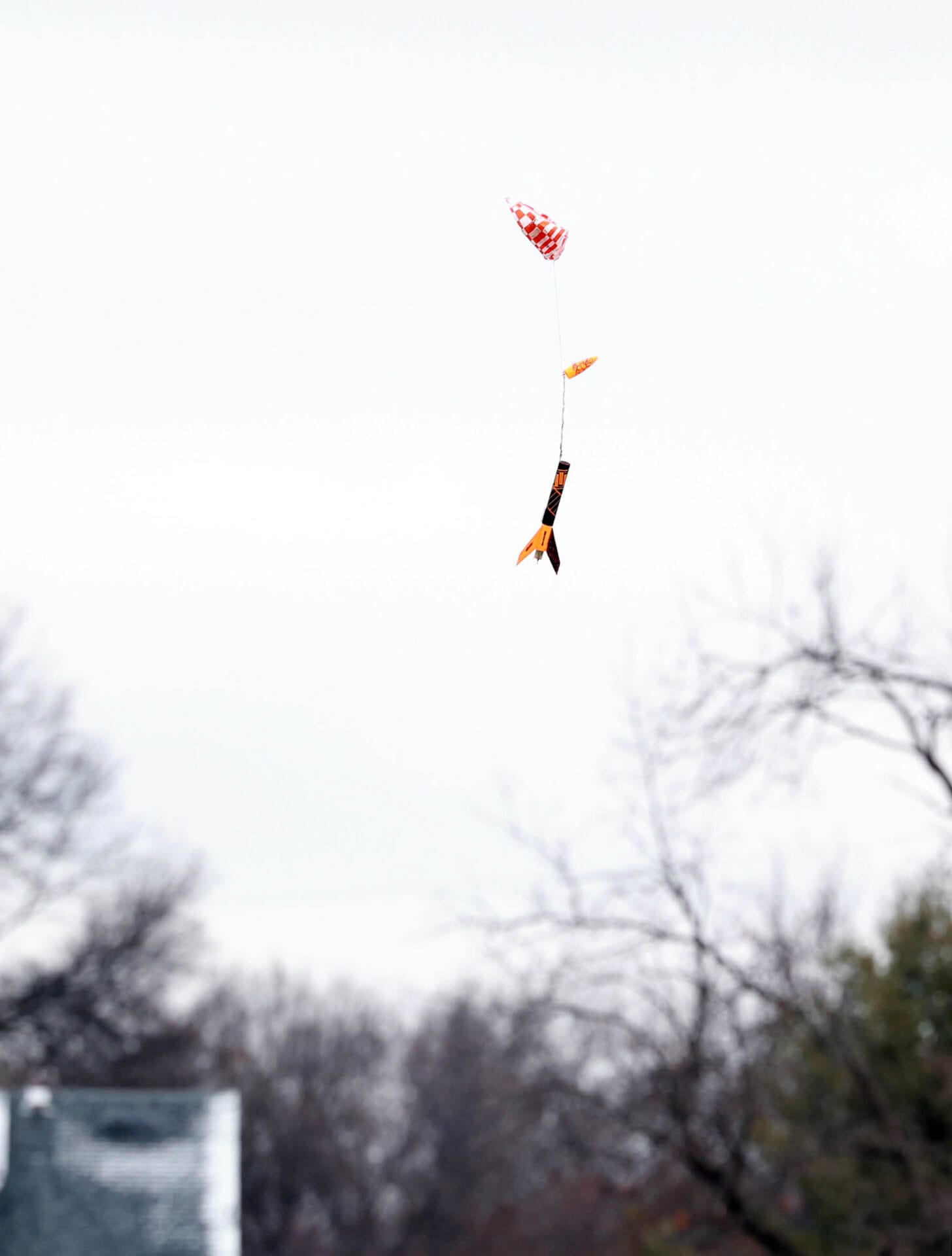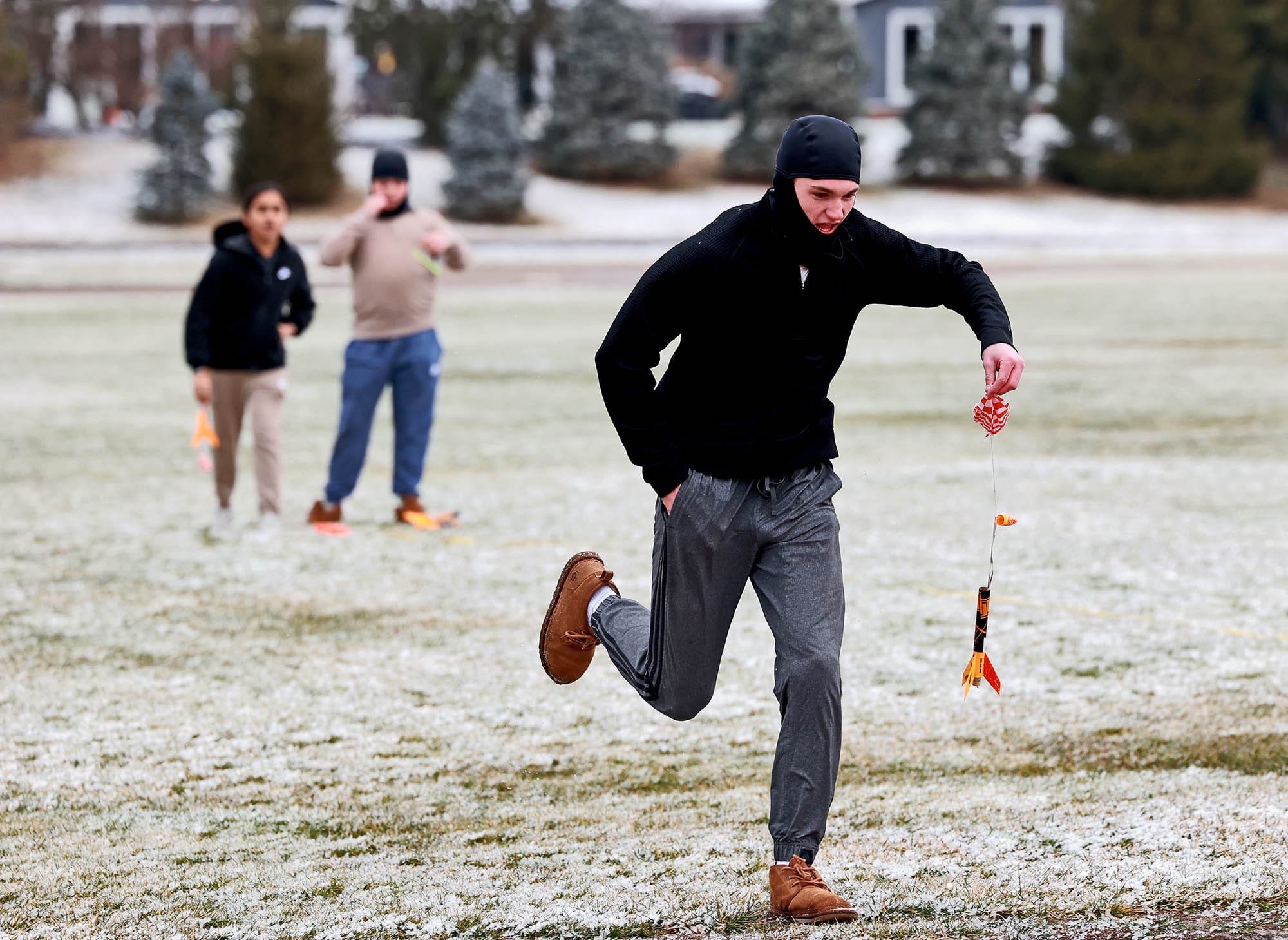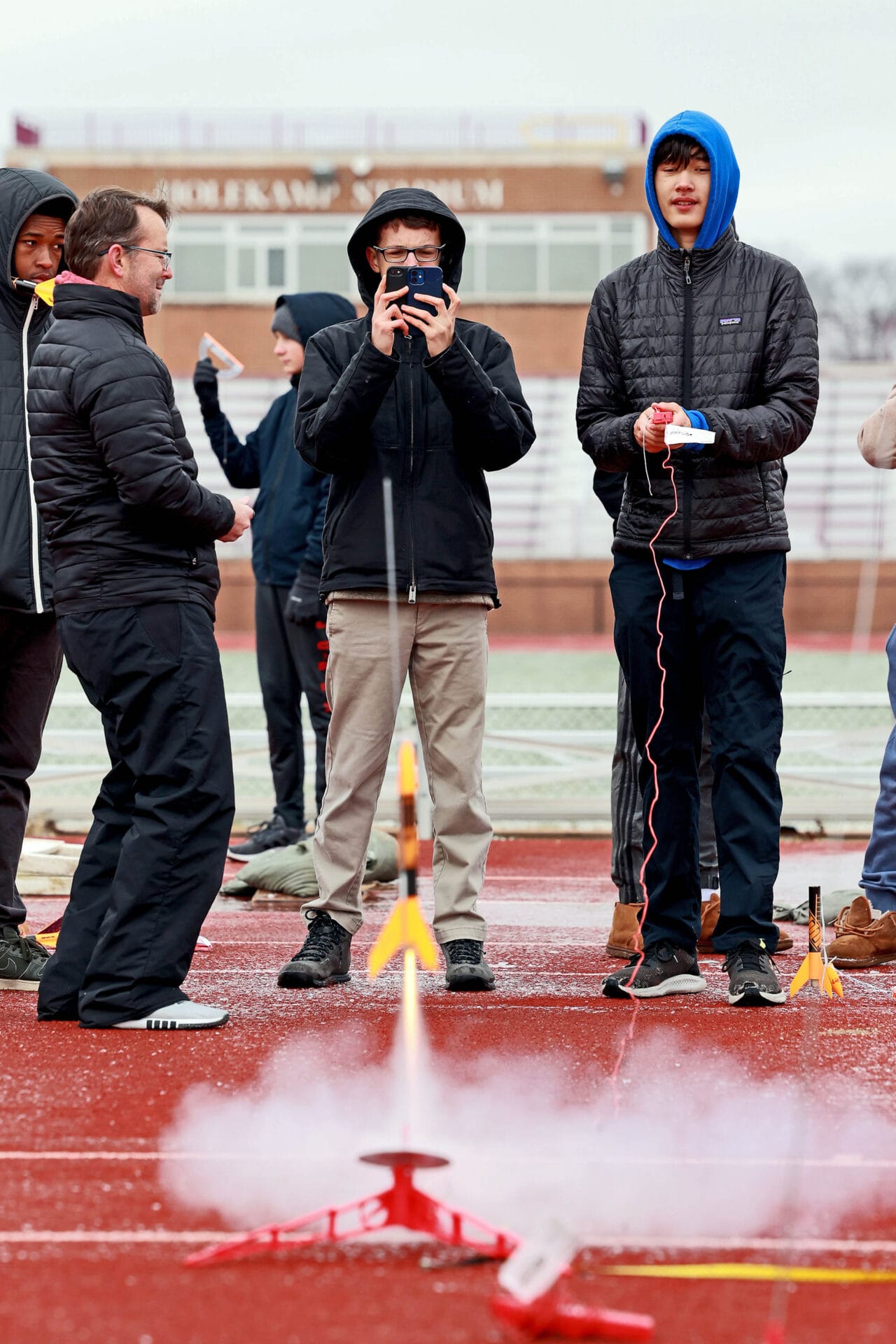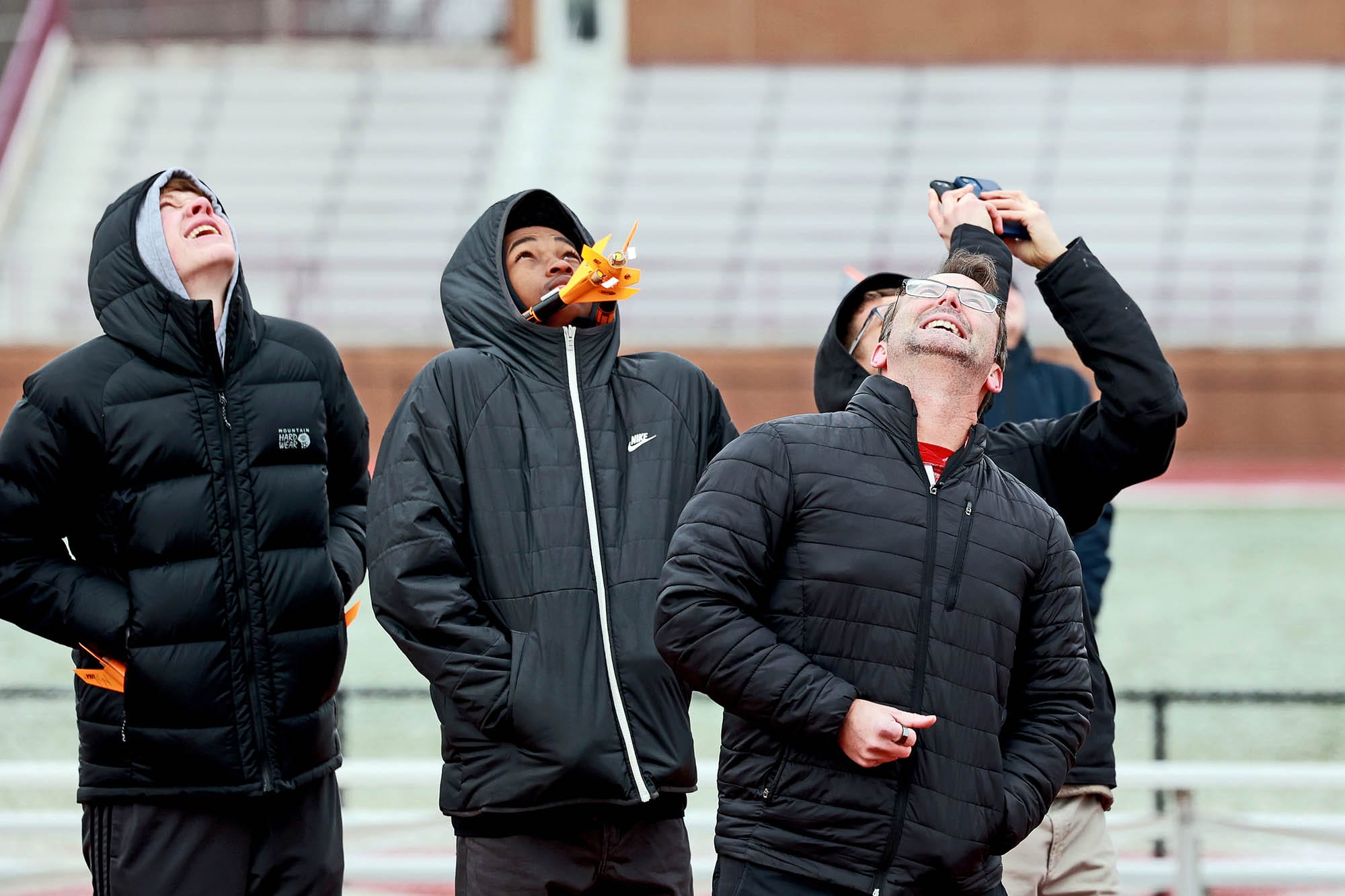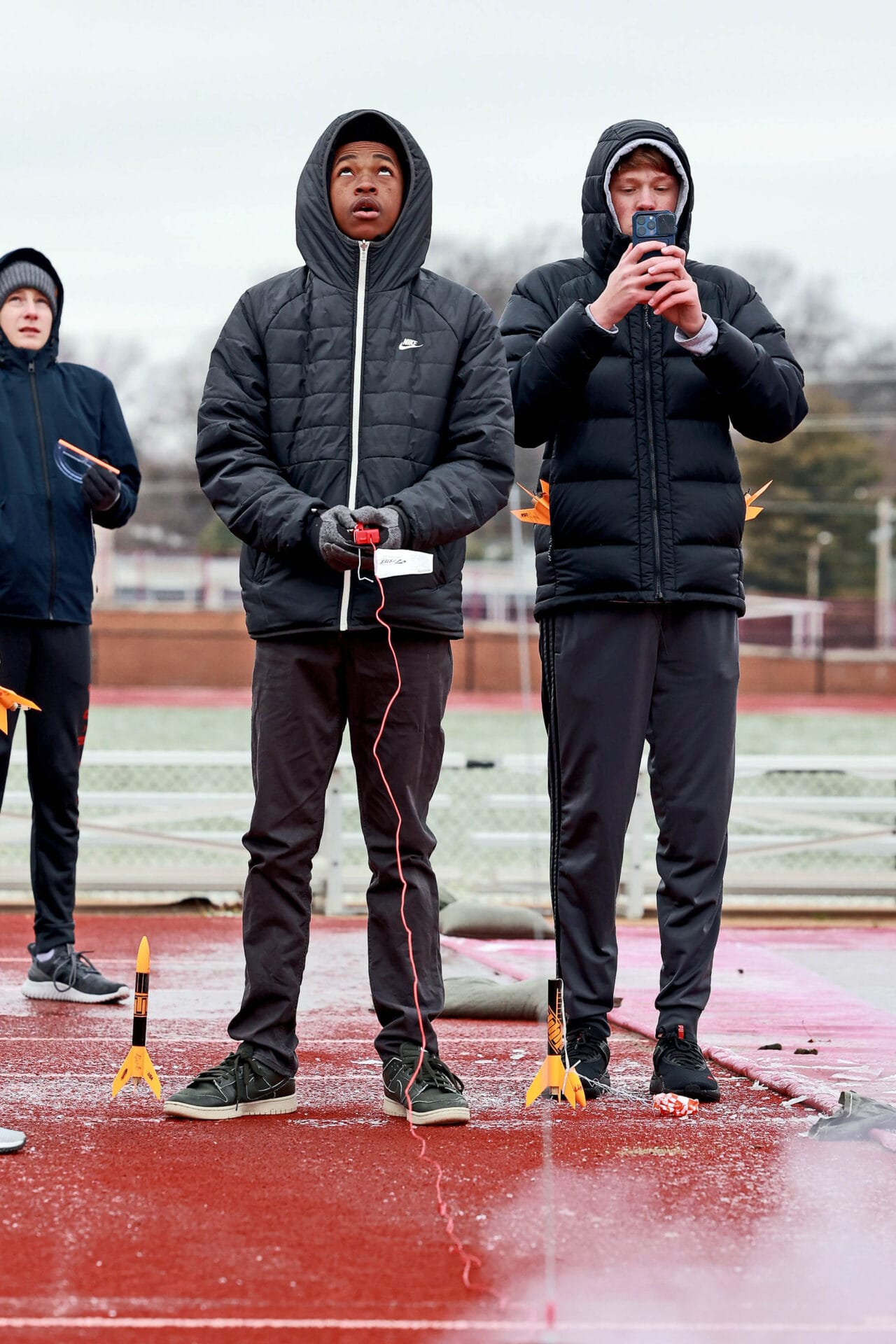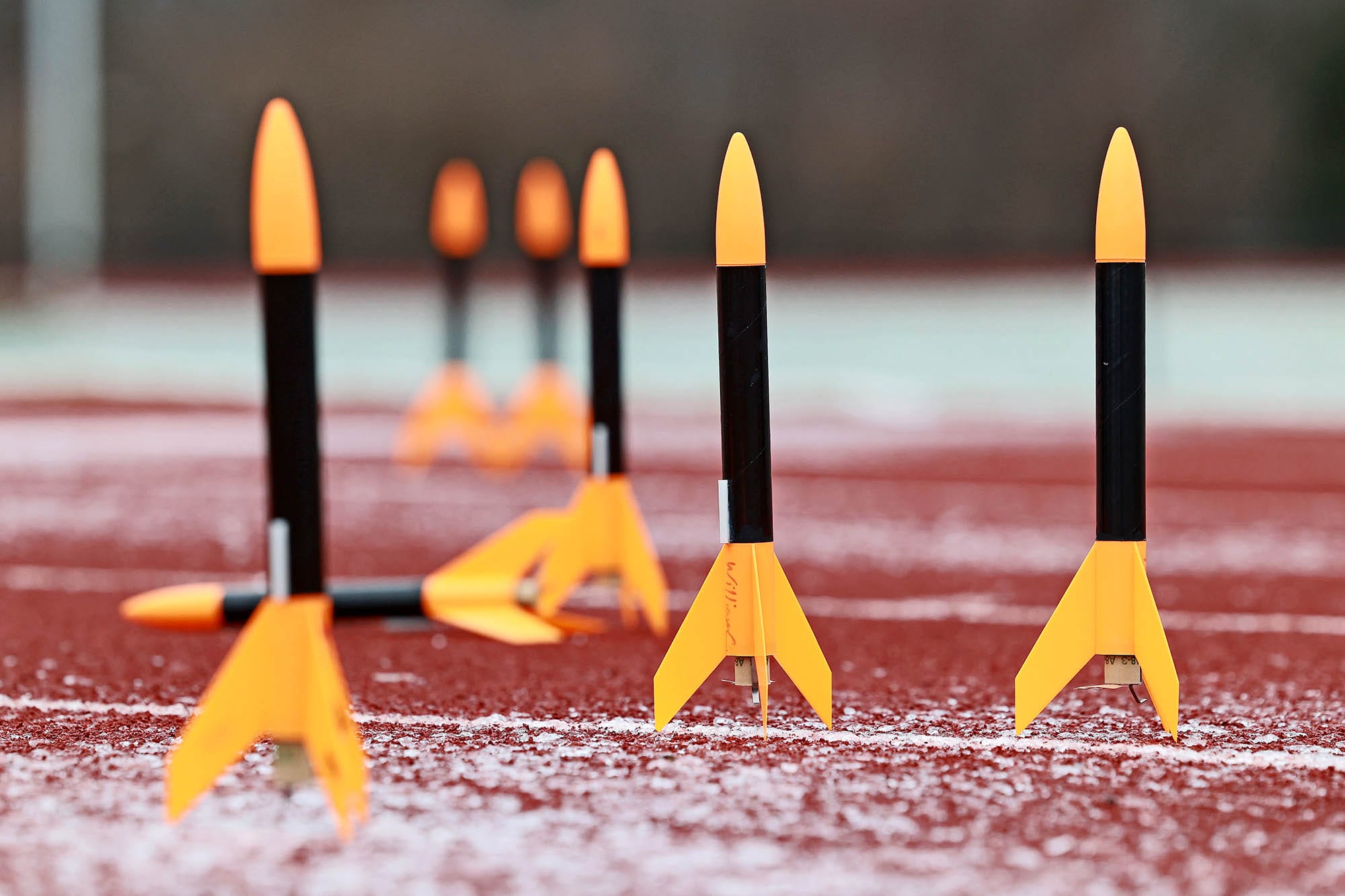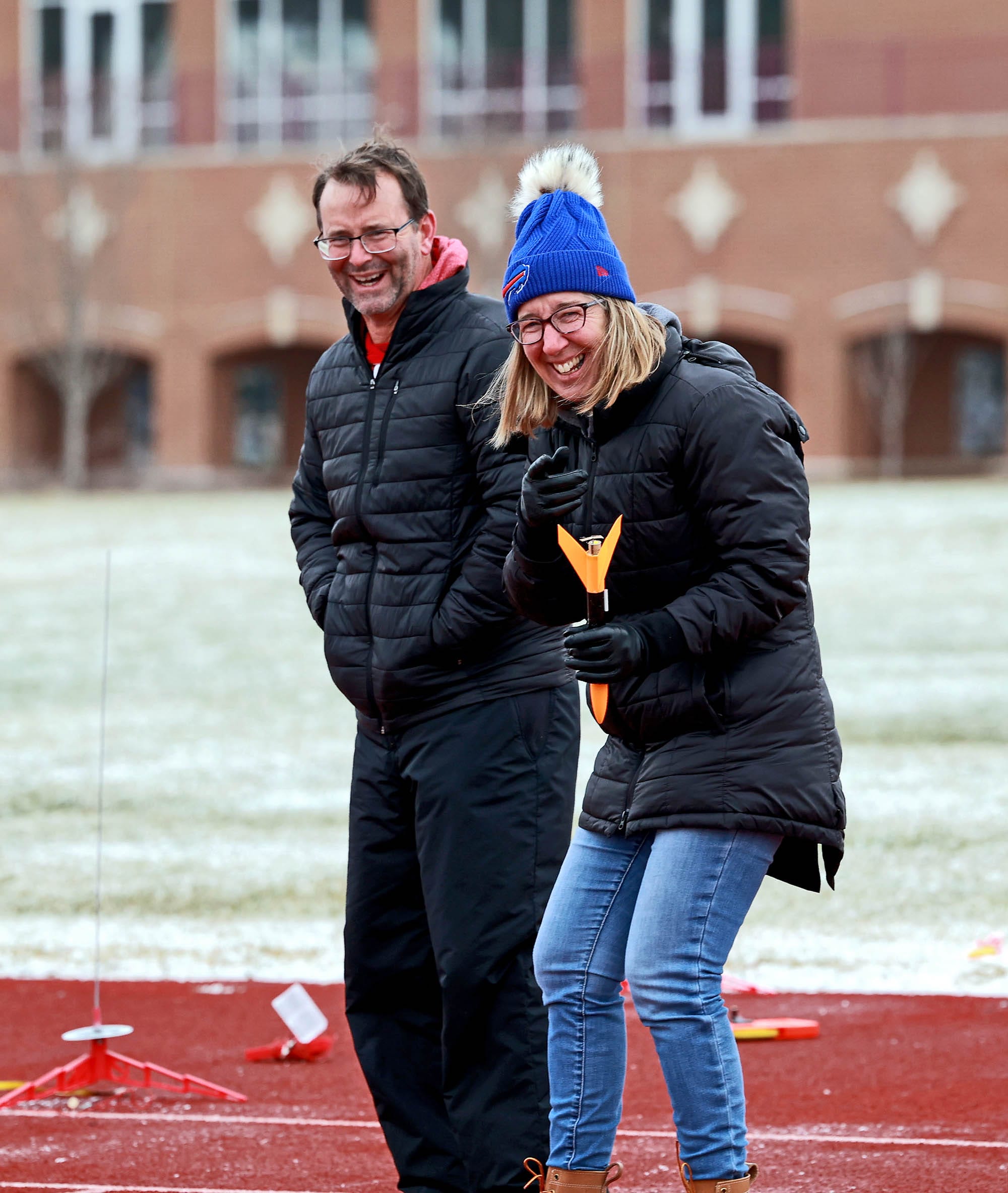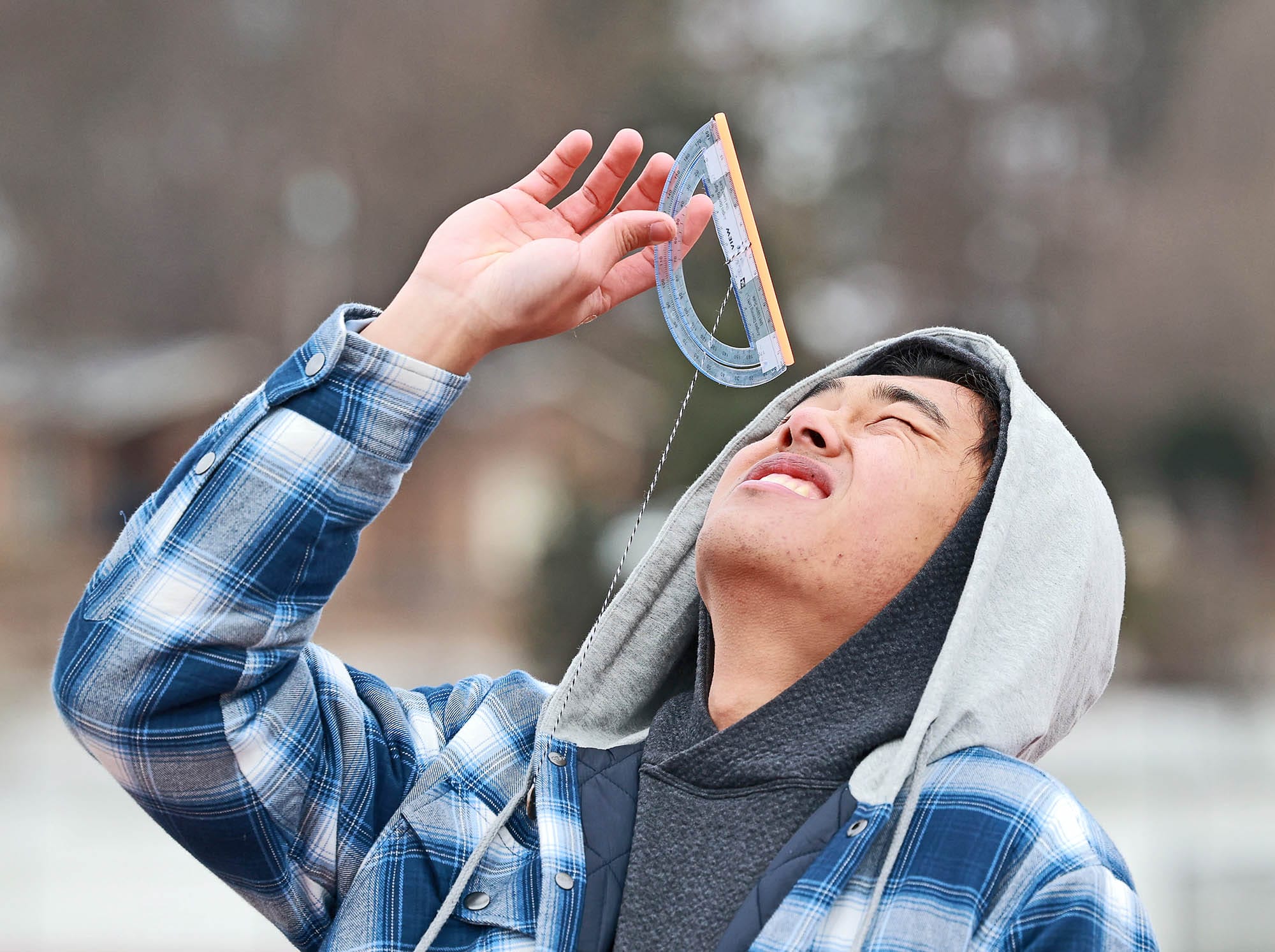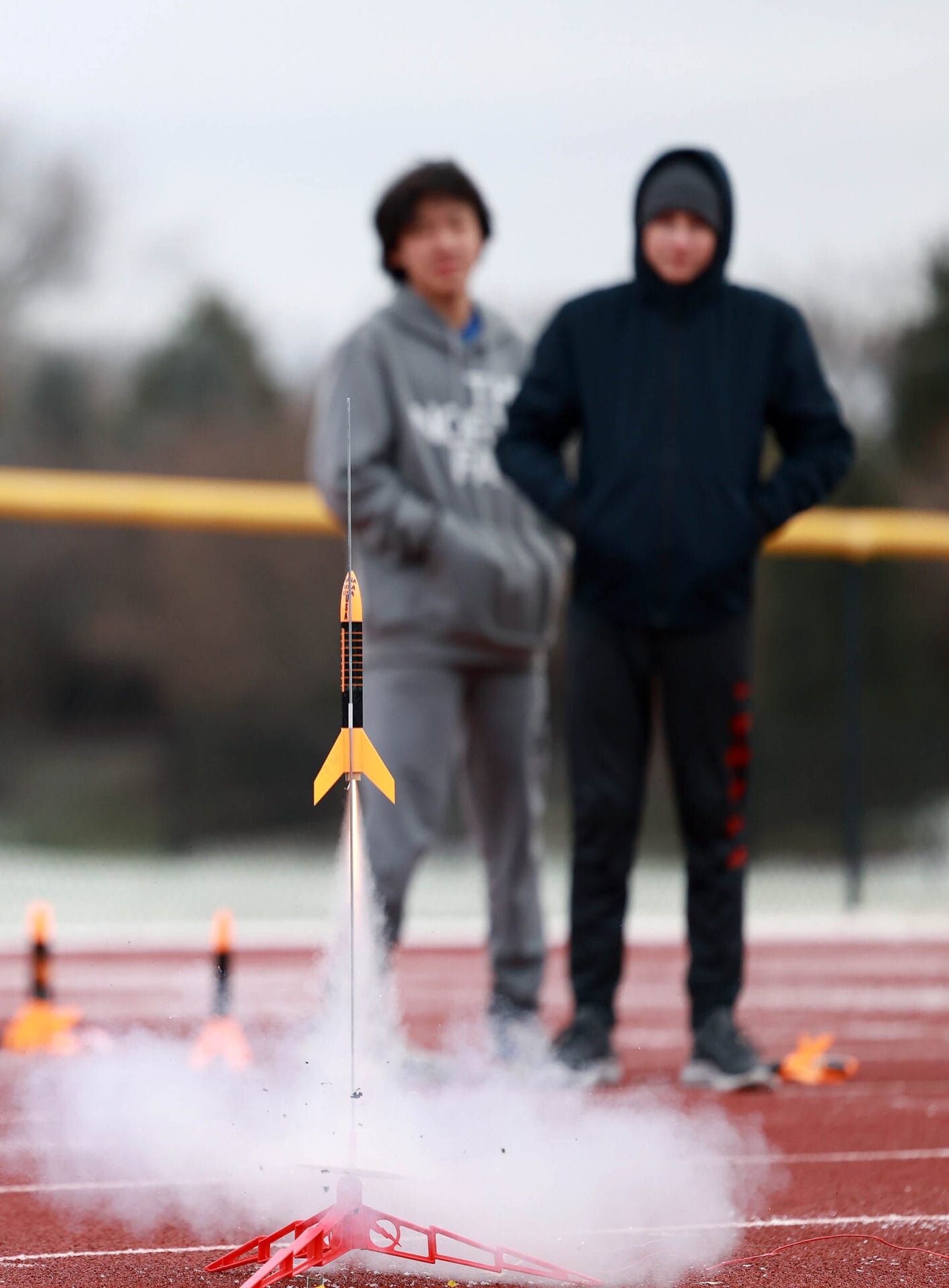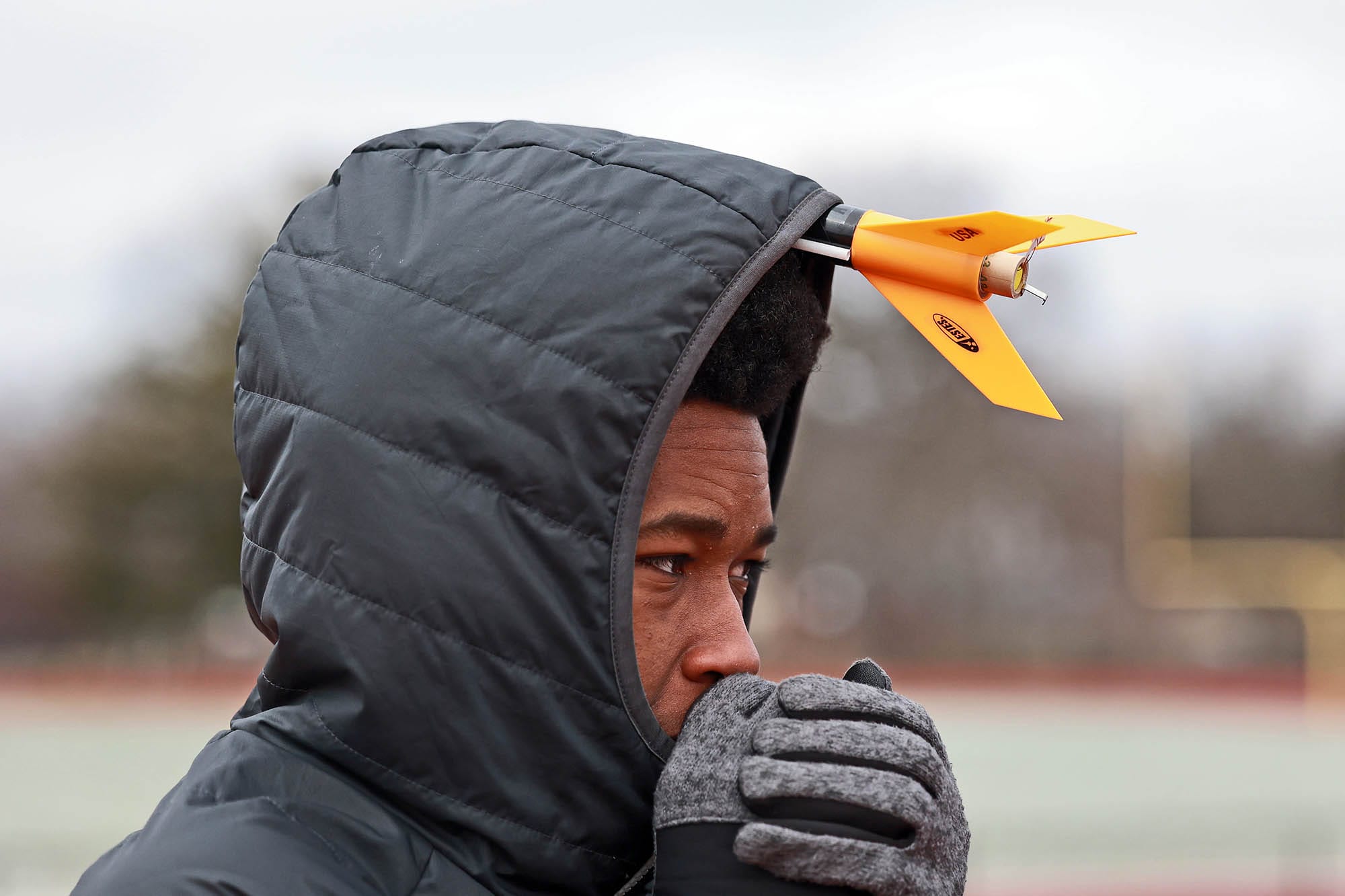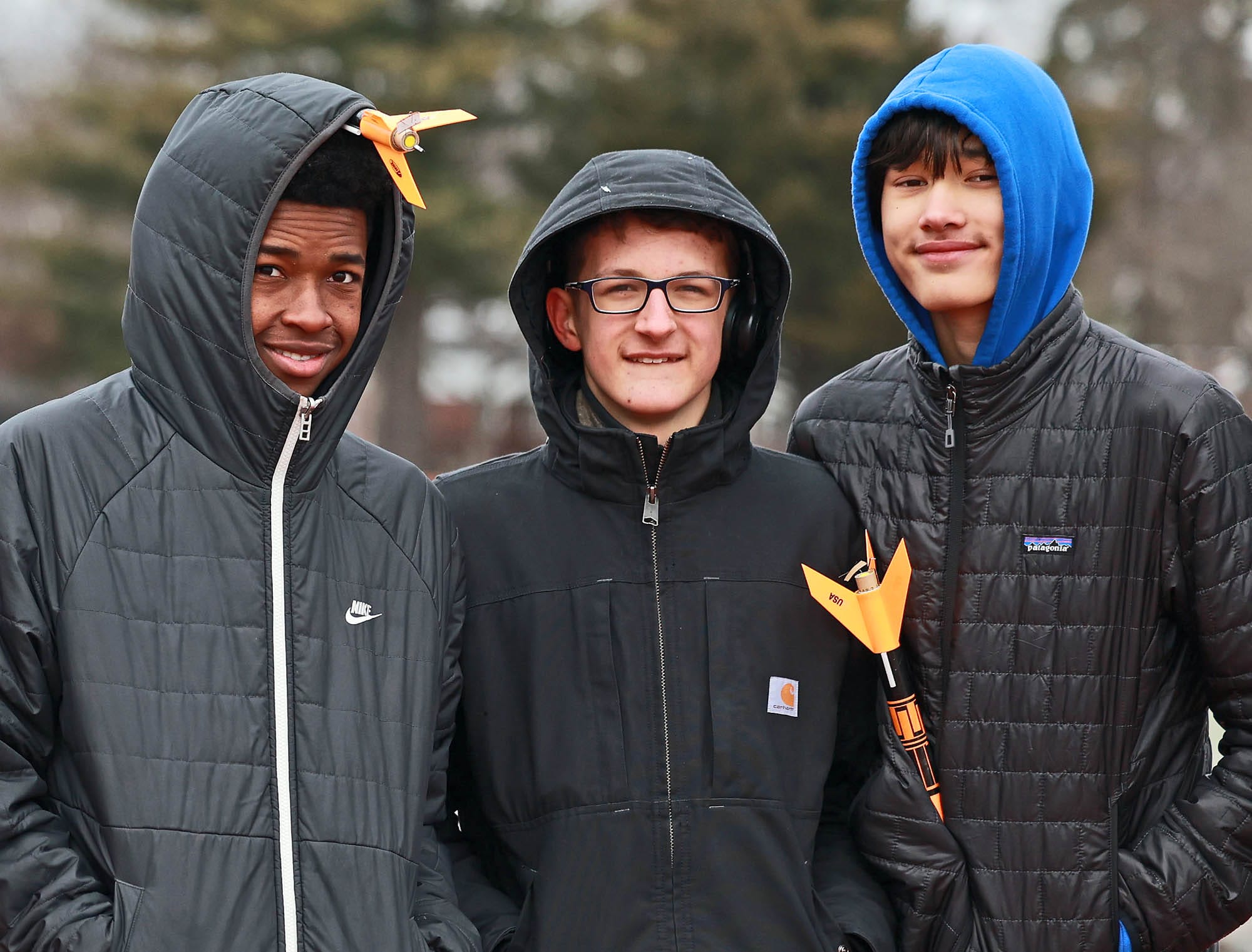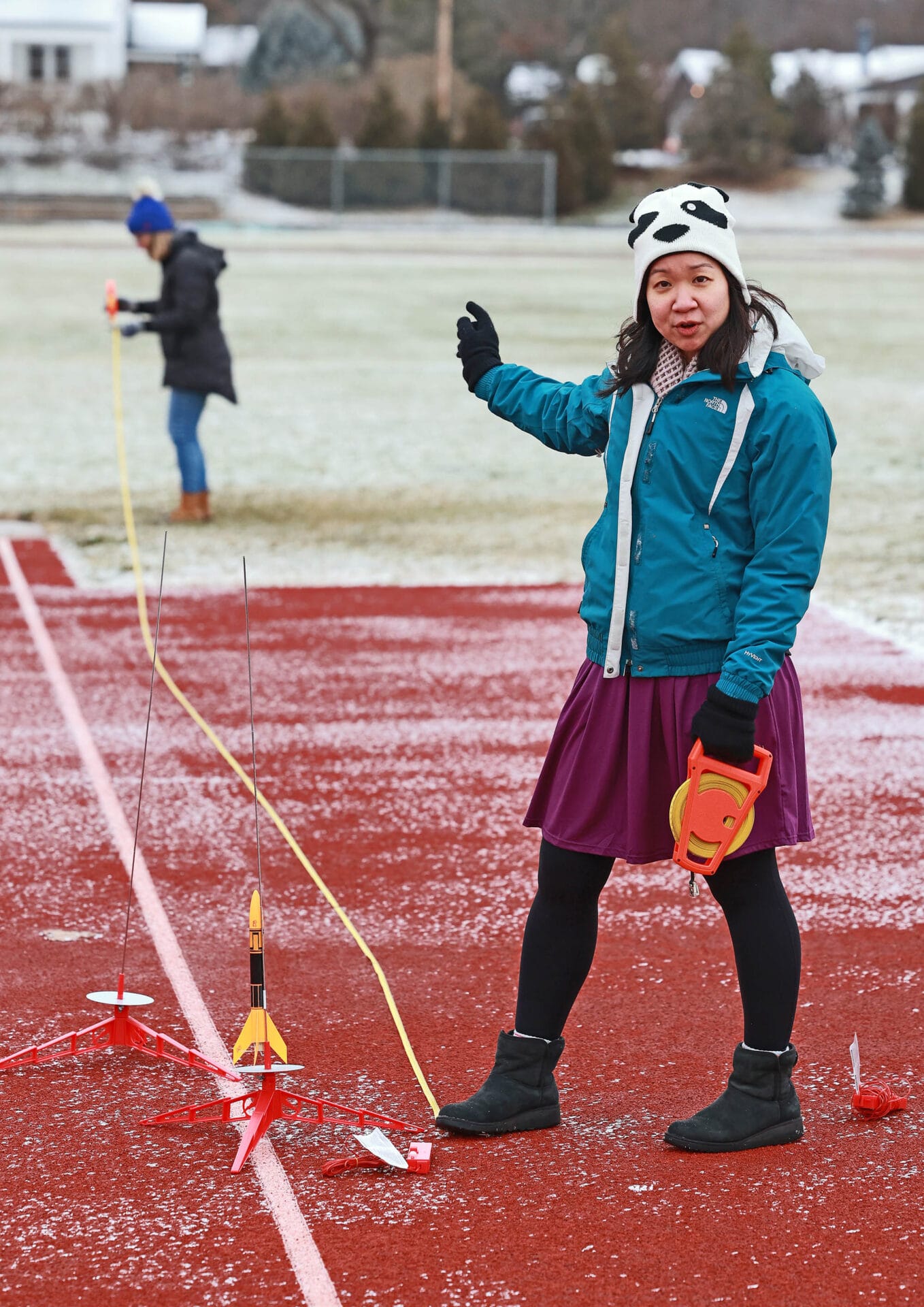Several years ago, Upper School Math Teacher Melanie Moody toyed with the idea of creating a fun summer course based on flight. She was inspired by a Boeing-sponsored paper airplane challenge, which is a year-long process. Then Winter Term came along, and she knew she wanted to create a flight-based course for the inaugural curriculum.
She developed and refined the course since Winter Term was announced before the pandemic, and was pleased to launch 3-2-1 Blast Off! on January 3 of this year. JK-12 Math Department Chair Diane Broberg hopped on board to teach with Moody.
The students began with what seemed like it might be the simplest of designs for flight: a paper airplane. They watched a video about the world record holder before using templates to fold their own craft. Of course, a contest ensued, and the students were challenged to predict which airplanes would be best for distance and which for accuracy. All the students liked what Moody calls “the tube,” which is literally a tube that flies just as far as conventionally folded paper airplanes. “It’s all in how you fold it,” said Moody.
Next, the students progressed to using various materials such as foam and cardboard. It was a learning process for everyone. “The materials weren’t right,” said Broberg, “and we learned that foam and cardboard are different than foamboard!” Both teachers and students embraced the evolving nature of the course, which is the epitome of science.
A giant leap forward (or upward!) in flight happened when the class graduated to rocketry. They conducted flight tests by building Estes rockets and powering them with both alka-seltzer and traditional store-bought engines. The students used right-angle trigonometry to calculate how high their rockets flew, incorporating math into their fun.
Finally, students enjoyed using their TI Inspire calculators to program math and science drones for flight. This was the best part of the course for Nolan Jones ’26. “I really enjoyed flying the drones with our calculators because I was able to practice more Python coding,” he said. They also heard from guest speaker (via Skype) Jose Capa Salinas, who is an engineering Ph.D. candidate at Purdue. Capa Salinas spoke about his work with drones and how engineers use drones to inspect bridges that would be unsafe for humans to attempt.
Moody and Broberg wove the principles of flight and rocketry throughout the course, challenging students to learn about Bernoulli’s principle (how the shape of a wing creates lift) along with using statistics to graph data that allowed them to compare their various models. The conducted before and after analysis, used statistics to create box plots and graphs, and found and compared variable statistics.
The class even enjoyed hearing from classmates working on getting their private pilot licenses: Jacob Daus ’25 and Teddy Miller ’27. Miller also flies gliders, and was happy to share his experience. Daus and Miller helped guide the students on the practical parts of flight and what they need to consider when designing their own craft.
The teachers were impressed by the students’ problem-solving skills. “We had a really good time,” said Moody. To the stars, Rams!
